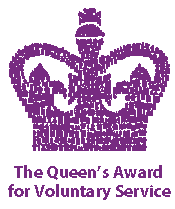Which season is best for this activity?
This session is best done in Spring or Summer
Learning objectives and links to the National Curriculum
The session links directly to the National Curriculum Science Programmes of Study (plants) for Key Stage 1 and 2. (https://bit.ly/3GlgU58) . All our sessions are underpinned by detailed lesson plans. These plans are adjusted to take account of the variations in ability and skill level across the Key Stages.
Pupils should be able to:
1. Identify and name common wild and garden plant, including deciduous and evergreen trees.
2. Identify and describe the structure of plants – roots, stem/trunk, leaves and flowers.
3. Explore the requirements of plants for life and growth.
4. Investigate the way water in transported within plants.
5. For Key Stage 2 – explore pollination and seed dispersal.
Outline of the Activity
An introduction in the main classroom will set the scene for the session. We then divide into three groups and move outside to explore the trees and plants on our nature trail and in the kitchen garden.
Group one will focus on trees, the parts of a tree and using an ID dial to identify a tree from its leaves.
Group 2 will focus on what plants need to grow by comparing plants with no light to plants in our raised meadow. They will make a seed bomb to take home. Key Stage 2 will learn about pollination and seed dispersal through games and hands on activities.
Group 3 will focus on garden plants. In our kitchen garden they will smell the herbs, dicsuss how they are used in cooking and medicine, name the parts of the plants and discuss how the roots carry water. Pupils will pot a basil plant to take home.
Ideas for pre-visit learning
Before bringing a group to do this activity, here are some ideas to help introduce the subject:
- Talk about the different plants that the children might see at home and at school
- Brainstorm what they think plants need to grow and survive
Ideas for follow-up work back at school
- Once their basil has grown, can they use the leaves in their cooking?
- Make a display using the different leaves they have identified – can the children make their own ID dials?
- Choose a plant to research and create a fact sheet on
- Create a story board to explain pollination
Thank you once again for this opportunity. It is a great experience and the children have loved it.


